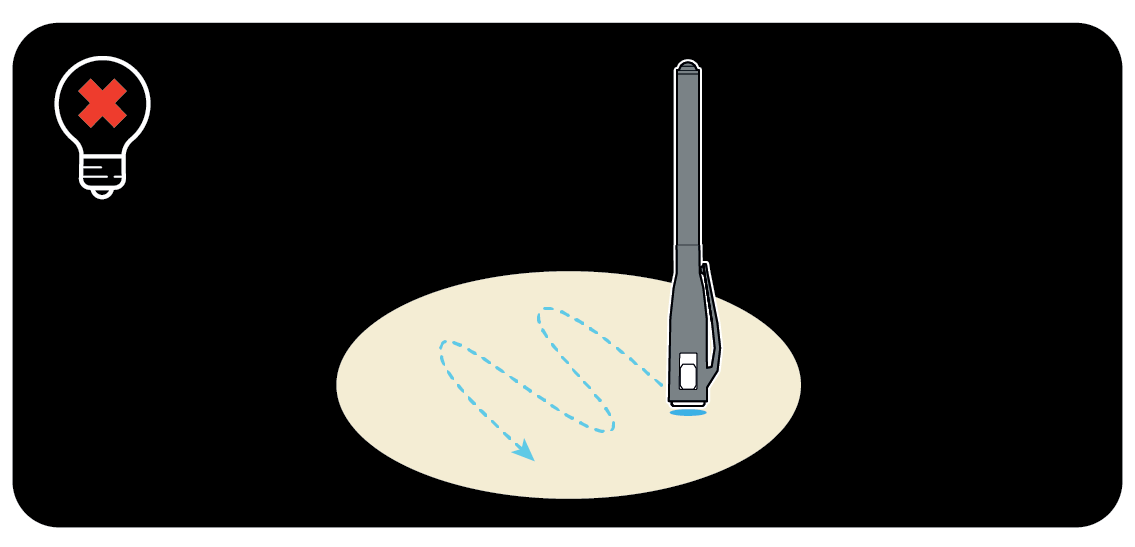Luminescent ink
Leave and read secret signs with ultraviolet light!
Safety
- Carefully review the general safety advice on the back of the box cover before starting the experiment.
- Be very careful in a dark room – turn the lights off only when necessary; be sure to prepare everything you’ll need in the darkness in advance; clear the path from the light switch to the table or, even better, ask someone else to turn the lights off.
Step-by-step instructions
The glow of the ultraviolet (UV) light is barely visible, but when directed at some objects, its brightness and color will change.

The felt pen’s ink is invisible in daylight, but will glow under UV light.

You can use your felt pen and UV light to mark objects so that only you can recognize them! Some countries’ paper currency bears similar markings.

The phosphorescent paper absorbs light and gradually emits it back after the light is turned off.

You can draw anything you like with light, but how long will the picture last? What will change if you hold the UV light closer?

Disposal
- Dispose of solid waste together with household garbage.
Scientific description
Everything around us is made up of tiny particles. For example, liquids and solids consist of molecules , and light is comprised of photons
. When light falls on an object, photons
hit the surface of the object and are absorbed by its molecules
. When a molecule
absorbs a photon
, it receives some energy
.
What happens when the molecule gets this energy?
1. The molecule
can start moving faster
.
2. It can fall apart : for example, clothes
fade
in sunlight when their dye molecules
break down under light.
3. Molecules of certain compounds can emit another photon
after a while. We perceive this as a glow. This is called luminescence.
There are different types of luminescence. Some molecules emit photons
immediately after they receive the energy to do so. This is called fluorescence. The ink of the felt pen contains fluorescent molecules, so the drawings stop glowing the instant you stop shining the light on them. Other molecules emit photons after a second-, minute- or even hour-long delay, which is called phosphorescence. Phosphorescent paper continues to glow after the light source is removed, which allows you to make more lasting drawings.
That’s interesting!
Imagine that you accidentally stained a white t-shirt
. How would you fix it? Let’s take a closer look at the situation and try to understand what exactly happened with the cloth. Different light particles (photons
) have different colors, and the color of the material
is actually the color of photons
that material
reflects
into our eyes. The stain
is basically a layer of new molecules on the cloth, and photons
falling on that layer are reflected
such that we see the new color
, not the initial white. Therefore, to clean it, we need to destroy these new molecules
. This is exactly what chemical bleaches and laundry detergents do.
However, after several washes, the white t-shirt begins to yellow
. This is a side effect of frequent bleaching—the chemicals also affect the molecules within the cloth, changing its color. This problem can be fixed with optical brighteners—fluorescent materials
that absorb UV light and emit blue photons
. Such fluorescent materials
can be added to laundry detergent to spread over your clothes as they’re washed. Thus, your clothes will not only reflect light, but also emit additional blue photons
, making them look like new! Fluorescent optical brighteners are also actively used in paper manufacturing to make paper look whiter and brighter.